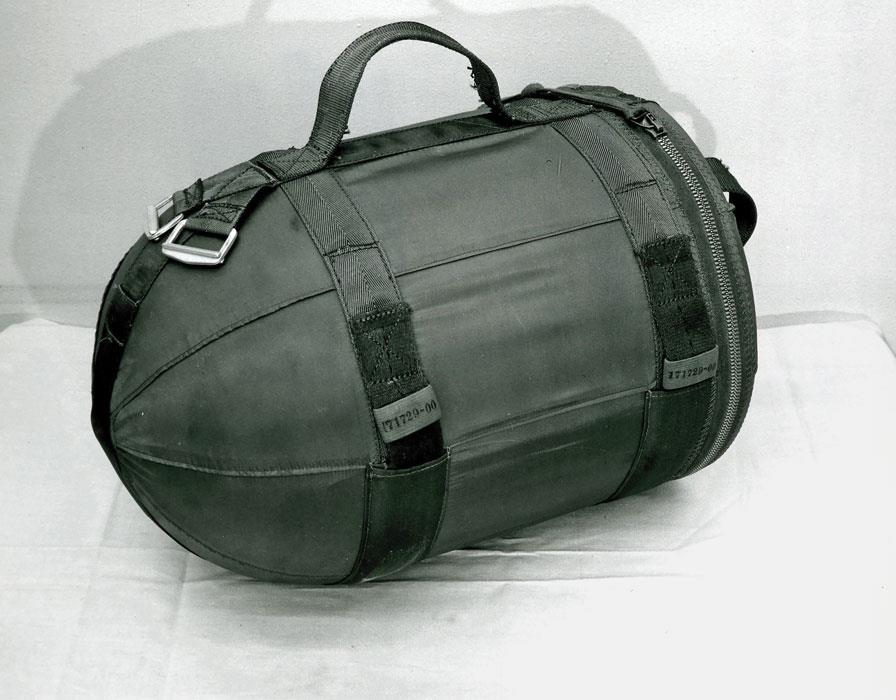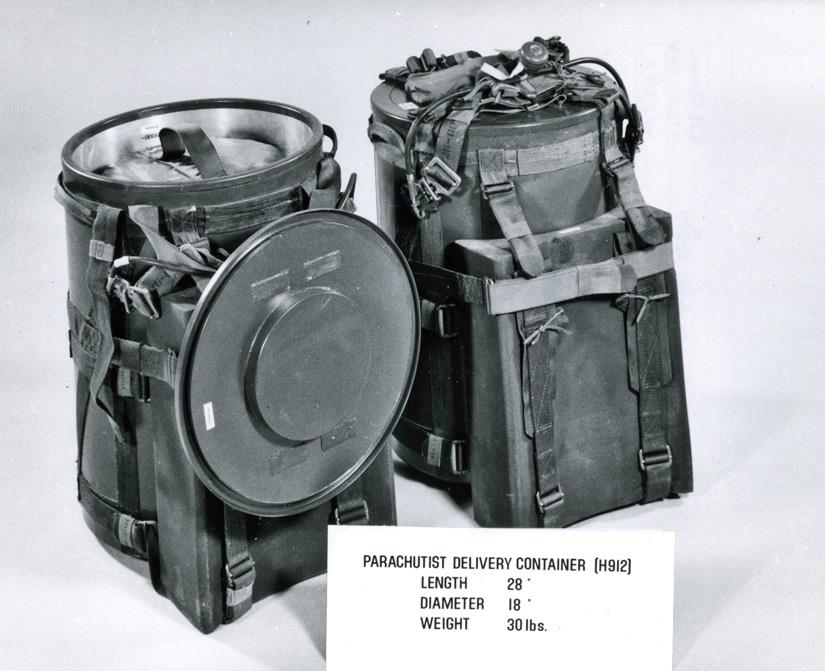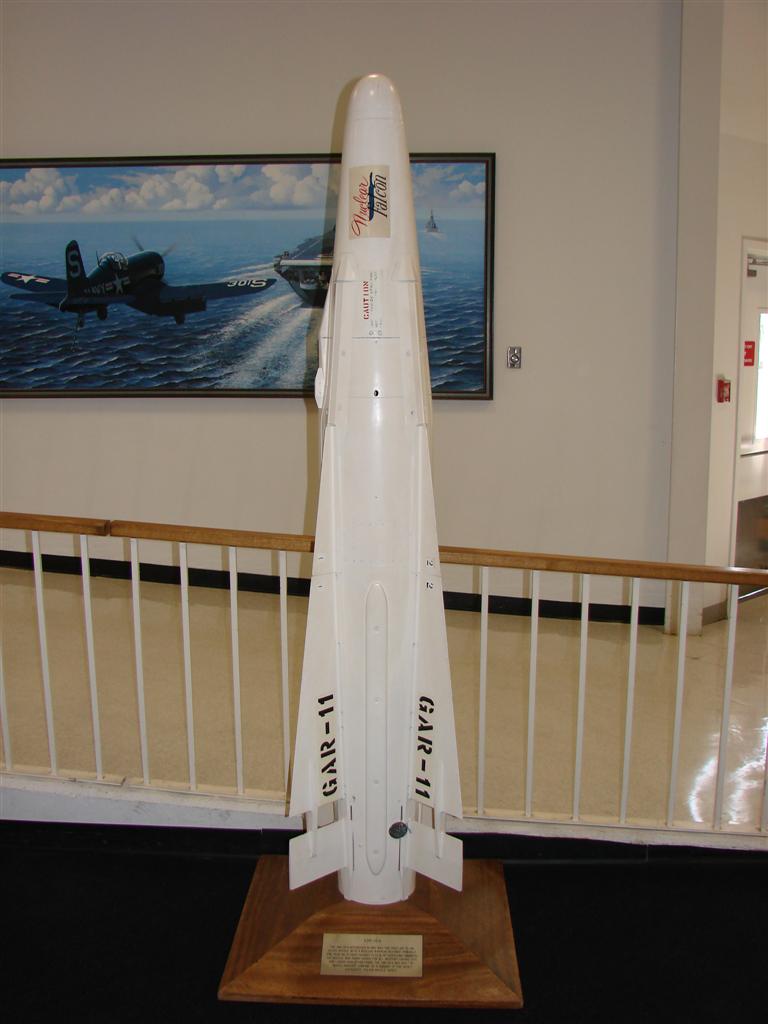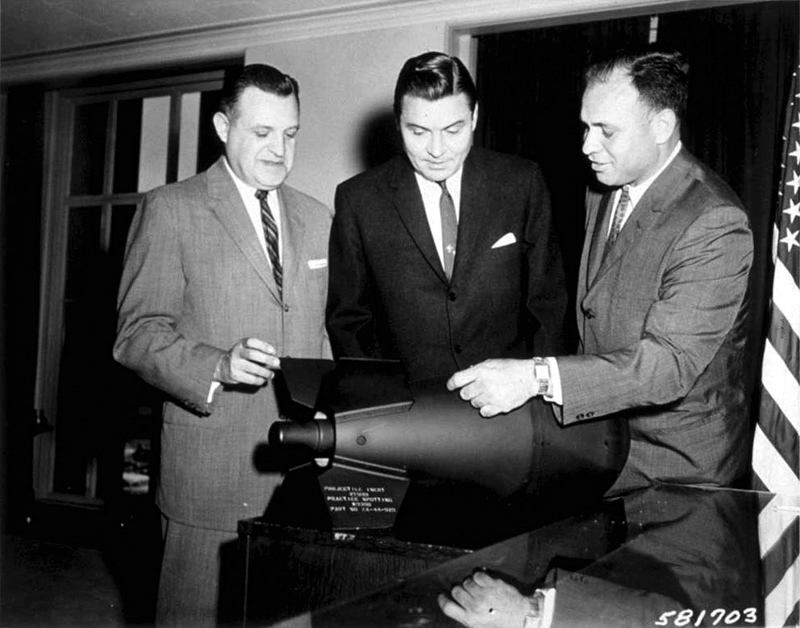|
W54
The W54 (also known as the Mark 54 or B54) was a tactical nuclear warhead developed by the United States in the late 1950s. The weapon is the smallest nuclear weapon in both weight and yield to have entered US service. It was a compact implosion device containing plutonium-239 as its fissile material, and in its various versions and mods it had a yield of . The weapon had two distinct versions: a warhead used in the AIM-26 Falcon air-to-air missile and in the Davy Crockett recoilless gun, and another used in the Special Atomic Demolition Munition (SADM) system, along with several mods for each version. The two types are distinct in that much of the design between them was different, to the point that during the development of the SADM it was proposed that it be given its own unique mark designation. A later development was the W72, which was a rebuilt W54 used with the AGM-62 Walleye guided bomb. The W72 was in service until 1979. Development Warhead Interest in a l ... [...More Info...] [...Related Items...] OR: [Wikipedia] [Google] [Baidu] |
Davy Crockett (nuclear Device)
The M28 or M29 Davy Crockett Weapon System was a tactical nuclear recoilless smoothbore gun for firing the M388 nuclear projectile, armed with the W54 nuclear warhead, that was deployed by the United States during the Cold War. It was the first project assigned to the United States Army Weapon Command in Rock Island, Illinois. It remains one of the smallest nuclear weapon systems ever built, incorporating a warhead with yields of 10 to 20 tons of TNT (42 to 84 GJ). It is named after American folk hero, soldier, and congressman Davy Crockett. History By 1950, there had been rapid developments made in the use of nuclear weapons after the detonation of "Little Boy" and "Fat Man" in 1945. These developments paved the way for nuclear warheads to be created at a smaller size. Advances in nuclear weapons technology, spurred on by the first detonation of the Soviet nuclear bomb in 1949, led to great reductions in the size of nuclear weapons. By 1957, the Atomic Energy Commission ... [...More Info...] [...Related Items...] OR: [Wikipedia] [Google] [Baidu] |
Special Atomic Demolition Munition
The Special Atomic Demolition Munition (SADM), also known as the XM129 and XM159 Atomic Demolition Charges, and the B54 bomb was a nuclear man-portable atomic demolition munition (ADM) system fielded by the US military from the 1960s to 1980s but never used in combat. It had an estimated yield of up to 1 kiloton of TNT. History and design At the time of the weapon's development, the existing Atomic Demolition Munition (ADM) was the T-4 Atomic Demolition Munition. Its transport required 4 men, each carrying a section of the weapon. Development began in June 1960 and an interim Mark 54 Mod 0 (now called the B54-0) weapon was put into production in April 1963. Production of the B54 Mod 1 SADM began in August 1964. The weapon was in diameter, long, and weighed . It included the warhead, a fuzing and firing system with a mechanical timer, a ferroelectric firing set, and a sealed housing. The body was constructed with aluminum forgings and molded fiberglass, and foam-rubber i ... [...More Info...] [...Related Items...] OR: [Wikipedia] [Google] [Baidu] |
AIM-26 Falcon
The AIM-26 Falcon was a larger, more powerful version of the AIM-4 Falcon air-to-air missile built by Hughes Electronics, Hughes. It is the only guided American air-to-air missile with a nuclear warhead to be produced; the unguided AIR-2 Genie rocket was also nuclear-armed. Development Starting in 1956 Hughes Electronics began the development of an enlarged version of the AIM-4 Falcon, GAR-1D Falcon that would carry a nuclear warhead. It was intended to provide a sure kill in attacks on Soviet Union, Soviet heavy bomber aircraft, at a time when guided missiles were not accurate enough to produce high-probability kills with small conventional warheads. The original development was for semi-active radar homing and Infrared homing, heat-seeking versions based on the conventional GAR-1/GAR-2 weapons, under the designations GAR-5 and GAR-6, respectively. The original program was cancelled. The program was revived in 1959, now under the name GAR-11. It entered service in 1961, carri ... [...More Info...] [...Related Items...] OR: [Wikipedia] [Google] [Baidu] |
T-4 Atomic Demolition Munition
The T4 Atomic Demolition Munition (ADM) was a nuclear weapon derived from the American W9 nuclear artillery shell. History The T4 was produced in 1957 from recycled W9 fissile components and was in service until 1963, when it was replaced with W30 Tactical Atomic Demolition Munitions and W45 Medium Atomic Demolition Munitions. The weapon weighed and could be broken down into four sections for transport by a four-man crew. Media coverage An article in the mid-1990s in '' Soldier of Fortune'' magazine by a former US Navy Underwater Demolition Team member described the T4 ADM without naming it. The description was moderately detailed, including that the T4 was assembled from separate components: *A gun barrel assembly, with the fission “bullet” and propellant and detonator A detonator is a device used to make an explosive or explosive device explode. Detonators come in a variety of types, depending on how they are initiated (chemically, mechanically, or electrica ... [...More Info...] [...Related Items...] OR: [Wikipedia] [Google] [Baidu] |
List Of Nuclear Weapons
This is a list of nuclear weapons listed according to country of origin, and then by type within the states. The United States, Russia, China and India are known to possess a nuclear triad, being capable to deliver nuclear weapons by land, sea and air. United States American nuclear weapons of all types – bombs, warheads, shells, and others – are numbered in the same sequence starting with the Mark 1 and () ending with the W91 (which was cancelled prior to introduction into service). All designs which were formally intended to be weapons at some point received a number designation. Pure test units which were experiments (and not intended to be weapons) are not numbered in this sequence. Early weapons were very large and could only be used as free fall bombs. These were known by "Mark" designators, like the Mark 4 which was a development of the Fat Man weapon. As weapons became more sophisticated they also became much smaller and lighter, allowing them to be used in many ... [...More Info...] [...Related Items...] OR: [Wikipedia] [Google] [Baidu] |
Tactical Nuclear Weapon
A tactical nuclear weapon (TNW) or non-strategic nuclear weapon (NSNW) is a nuclear weapon that is designed to be used on a battlefield in military situations, mostly with friendly forces in proximity and perhaps even on contested friendly territory. Generally smaller in explosive power, they are defined in contrast to strategic nuclear weapons, which are designed mostly to be targeted at the enemy interior far away from the war front against military bases, cities, towns, arms industries, and other hardened or larger-area targets to damage the enemy's ability to wage war. No tactical nuclear weapons have ever been used in combat. Details Tactical nuclear weapons include gravity bombs, short-range missiles, artillery shells, land mines, depth charges, and torpedoes which are equipped with nuclear warheads. Also in this category are nuclear armed ground-based or shipborne surface-to-air missiles (SAMs) and air-to-air missiles. Small, two-man portable or truck-portable tactic ... [...More Info...] [...Related Items...] OR: [Wikipedia] [Google] [Baidu] |
Little Feller II
Little Feller II and Little Feller I were code names for a set of nuclear tests undertaken by the United States at the Nevada Test Site on July 7 and 17, 1962 as part of Operation Sunbeam. They were both tests of stockpiled W54 warheads, the smallest nuclear warheads known to have been produced by the United States, used in both the Davy Crockett warhead and the Special Atomic Demolition Munition. In Little Feller II (July 7), the warhead was suspended only three feet above the ground and had a yield equivalent to . In Little Feller I (July 17), the warhead was launched as a Davy Crockett device from a stationary 155 millimeter launcher and set to detonate between above the ground around from the launch point, with a yield of . This test was performed in conjunction with Operation Ivy Flats, a simulated military environment, and was observed by Attorney General Robert F. Kennedy and presidential adviser General Maxwell D. Taylor. Little Feller I was the last near-ground atm ... [...More Info...] [...Related Items...] OR: [Wikipedia] [Google] [Baidu] |
AGM-62 Walleye
The AGM-62 Walleye is a TV guidance, television-guided glide bomb which was produced by Martin Marietta and used by the United States Armed Forces from the 1960s-1990s. The Walleye I had a 825 lb (374 kg) Explosive material, high-explosive warhead; the later Walleye II "Fat Albert" version had a 2000 lb warhead and the ability to replace that with a W72 (nuclear warhead), W72 nuclear warhead. The AGM designation of the ''Walleye'' as an "air-to-ground missile" is a misnomer, as it is an unpowered bomb with guidance avionics, similar to the more modern GBU-15. The Walleye was superseded by the AGM-65 Maverick, which did include a rocket motor and was thus a missile. History The Walleye was the first of a family of precision-guided munitions designed to hit targets with minimal collateral damage. This "smart bomb" had no propulsion system, but it could be maneuvered via a TV guidance, television guidance system during its glide from an aircraft to the target. As a ... [...More Info...] [...Related Items...] OR: [Wikipedia] [Google] [Baidu] |
Little Feller I
Little Feller II and Little Feller I were code names for a set of nuclear tests undertaken by the United States at the Nevada Test Site on July 7 and 17, 1962 as part of Operation Sunbeam. They were both tests of stockpiled W54 warheads, the smallest nuclear warheads known to have been produced by the United States, used in both the Davy Crockett warhead and the Special Atomic Demolition Munition. In Little Feller II (July 7), the warhead was suspended only three feet above the ground and had a yield equivalent to . In Little Feller I (July 17), the warhead was launched as a Davy Crockett device from a stationary 155 millimeter launcher and set to detonate between above the ground around from the launch point, with a yield of . This test was performed in conjunction with Operation Ivy Flats, a simulated military environment, and was observed by Attorney General Robert F. Kennedy and presidential adviser General Maxwell D. Taylor. Little Feller I was the last near-ground atm ... [...More Info...] [...Related Items...] OR: [Wikipedia] [Google] [Baidu] |
UGM-27 Polaris
The UGM-27 Polaris missile was a two-stage solid-fueled nuclear-armed submarine-launched ballistic missile (SLBM). As the United States Navy's first SLBM, it served from 1961 to 1980. In the mid-1950s the Navy was involved in the Jupiter missile project with the U.S. Army, and had influenced the design by making it squat so it would fit in submarines. However, they had concerns about the use of liquid fuel rockets on board ships, and some consideration was given to a solid fuel version, Jupiter S. In 1956, during an anti-submarine study known as Project Nobska, Edward Teller suggested that very small hydrogen bomb warheads were possible. A crash program to develop a missile suitable for carrying such warheads began as Polaris, launching its first shot less than four years later, in February 1960. As the Polaris missile was fired underwater from a moving platform, it was essentially invulnerable to counterattack. This led the Navy to suggest, starting around 1959, that they ... [...More Info...] [...Related Items...] OR: [Wikipedia] [Google] [Baidu] |
Robert F
The name Robert is an ancient Germanic given name, from Proto-Germanic "fame" and "bright" (''Hrōþiberhtaz''). Compare Old Dutch ''Robrecht'' and Old High German ''Hrodebert'' (a compound of '' Hruod'' () "fame, glory, honour, praise, renown, godlike" and '' berht'' "bright, light, shining"). It is the second most frequently used given name of ancient Germanic origin.Reaney & Wilson, 1997. ''Dictionary of English Surnames''. Oxford University Press. It is also in use as a surname. Another commonly used form of the name is Rupert. After becoming widely used in Continental Europe, the name entered England in its Old French form ''Robert'', where an Old English cognate form (''Hrēodbēorht'', ''Hrodberht'', ''Hrēodbēorð'', ''Hrœdbœrð'', ''Hrœdberð'', ''Hrōðberχtŕ'') had existed before the Norman Conquest. The feminine version is Roberta. The Italian, Portuguese, and Spanish form is Roberto. Robert is also a common name in many Germanic languages, including ... [...More Info...] [...Related Items...] OR: [Wikipedia] [Google] [Baidu] |










